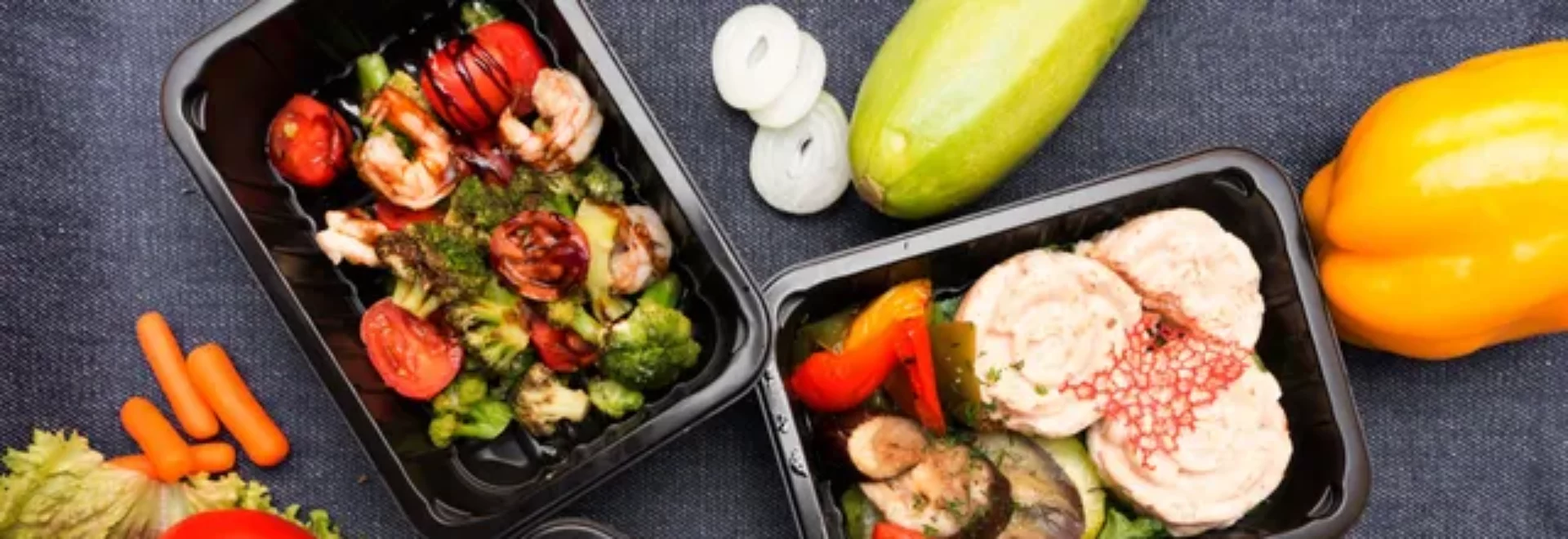Veggie Fajitas
Are you looking for a delicious and healthy meal option that is both flavorful and plant-based? Look no further than veggie fajitas! Bursting with vibrant colors and a medley of fresh vegetables, veggie fajitas offer a satisfying and wholesome dining experience. In this article, we will explore the world of veggie fajitas, from their origins to cooking techniques, variations, health benefits, and tips for perfecting this delectable dish.

1.Veggie Fajitas
Veggie fajitas are a popular Tex-Mex dish that has gained widespread popularity due to its vibrant flavors and versatility. Whether you’re a vegetarian, vegan, or simply looking to incorporate more plant-based meals into your diet, veggie fajitas are a fantastic option. Let’s dive deeper into what makes veggie fajitas so enticing.
2. What are Veggie Fajitas?
Veggie fajitas consist of a sizzling mixture of grilled or stir-fried vegetables, seasoned to perfection, and served with warm tortillas. The vegetables are typically cut into strips or slices and marinated in a flavorful blend of spices and herbs. The cooked veggies are then wrapped in tortillas and topped with various condiments and garnishes, creating a mouthwatering culinary experience.
3. A Brief History of Fajitas
Before we delve into the specifics of veggie fajitas, it’s essential to understand their origins. Fajitas have a rich history that can be traced back to the ranching culture of West Texas and Northern Mexico. Initially, fajitas were made with tough, skirt steak, which was the less desirable cut of meat. Over time, this humble dish evolved into a Tex-Mex favorite and eventually expanded to include vegetarian and vegan variations, such as veggie fajitas.
4. Ingredients for Veggie Fajitas
To create a flavorful and satisfying veggie fajita experience, it’s crucial to select the right ingredients. Here are the key components you’ll need:
Vegetables
The star of veggie fajitas is, of course, the vegetables. Opt for a colorful variety to create a visually appealing dish. Some popular choices include bell peppers, onions, zucchini, mushrooms, and corn. Feel free to experiment with other veggies based on your preferences.
Seasonings and Marinades
To infuse the vegetables with flavor, you’ll need a combination of seasonings and marinades. Common spices include cumin, chili powder, paprika, garlic powder, and oregano. Additionally, lime juice, soy sauce, and olive oil can be used to marinate the vegetables and add depth to their taste.
Tortillas
Tortillas are an integral part of fajitas. Traditional flour tortillas are commonly used, but you can also opt for whole wheat or corn tortillas. Choose the type that suits your dietary preferences or experiment with different varieties to find your favorite.
Toppings and Sides
To enhance the flavor and texture of your veggie fajitas, you can add various toppings and sides. Some popular choices include guacamole, salsa, sour cream (or plant-based alternatives), shredded cheese (or vegan cheese), chopped cilantro, and lime wedges. These additions provide a burst of freshness and tanginess to complement the vegetables.
5. Cooking Techniques for Veggie Fajitas
When it comes to cooking veggie fajitas, there are several techniques you can use to achieve delicious results. The three primary methods are grilling, stir-frying, and roasting. Let’s explore each of them:
Grilling
Grilling the vegetables adds a smoky and charred flavor to your fajitas. You can use a grill pan, an outdoor grill, or even a stovetop grill to achieve those coveted grill marks. The high heat of grilling helps to caramelize the vegetables, enhancing their natural sweetness.
Stir-Frying
Stir-frying is a quick and efficient way to cook veggie fajitas. It involves tossing the vegetables in a hot pan or wok with a small amount of oil over high heat. The fast cooking process ensures that the veggies retain their vibrant colors and crisp texture.
Roasting
Roasting the vegetables in the oven is another option for creating delicious veggie fajitas. This method intensifies the flavors as the veggies become caramelized and slightly charred. It’s an excellent choice if you prefer a softer texture and deeper taste.
6. How to Make Veggie Fajitas
Now that we have explored the essentials of veggie fajitas let’s dive into the step-by-step process of making this mouthwatering dish:
Preparing the Vegetables
Begin by washing and cutting the vegetables into uniform strips or slices. This ensures even cooking and easy assembly of the fajitas.
Marinating the Vegetables
In a bowl, combine the seasonings, marinade ingredients, and vegetables. Toss them well, making sure the veggies are evenly coated. Allow the mixture to marinate for at least 30 minutes to let the flavors meld together.
Cooking the Vegetables
Choose your preferred cooking technique—grilling, stir-frying, or roasting—and cook the marinated vegetables accordingly. Pay attention to the cooking times and adjust the heat as needed to achieve a perfect balance of tenderness and slight char.
Assembling the Fajitas
Warm the tortillas and assemble the cooked vegetables inside them. Add your desired toppings and condiments, and roll the tortillas into a tight wrap. You can secure them with toothpicks if necessary. Serve your veggie fajitas warm and enjoy!
7. Variations of Veggie Fajitas
While the classic veggie fajitas are delightful, there are also exciting variations that you can explore to add more diversity to your meals. Here are three popular options:
Tofu Fajitas
For a protein-packed alternative, replace or combine some of the vegetables with firm tofu. Marinate the tofu alongside the veggies and cook it using the same techniques. The tofu will absorb the flavors beautifully, adding a savory and hearty element to your fajitas.
Portobello Mushroom Fajitas
Portobello mushrooms are an excellent substitute for meat due to their meaty texture and umami flavor. Grill or roast the marinated mushrooms to bring out their robust taste. The result is a satisfying fajita filling that mimics the richness of traditional meat-based fajitas.
Chickpea Fajitas
For a unique twist, incorporate chickpeas into your veggie fajitas. These legumes provide a creamy texture and a boost of protein. Season and roast the chickpeas alongside the vegetables for a delightful and filling variation.
8. Health Benefits of Veggie Fajitas
Veggie fajitas offer not only a flavorful dining experience but also numerous health benefits. Let’s explore some of the advantages of incorporating veggie fajitas into your diet:
Nutrient-rich Ingredients
Vegetables used in fajitas are packed with essential vitamins, minerals, and antioxidants. They provide a wide array of nutrients like vitamin C, vitamin A, potassium, and fiber, promoting overall well-being and supporting a healthy immune system.
High in Fiber
The combination of vegetables and whole-grain tortillas in veggie fajitas ensures an excellent fiber content. Fiber aids in digestion, helps maintain healthy cholesterol levels, and contributes to a feeling of fullness, making it a valuable component of a balanced diet.
Low in Calories
Compared to traditional meat-based fajitas, veggie fajitas are generally lower in calories. This makes them a great option for those watching their calorie intake or aiming to achieve weight management goals while still enjoying a flavorful meal.
9. Tips for Perfect Veggie Fajitas
To elevate your veggie fajita game, here are some tips to keep in mind:
Choosing Fresh Vegetables
Opt for fresh, locally sourced vegetables whenever possible. They tend to have superior taste and texture compared to those that have traveled long distances. Supporting local farmers also promotes sustainability and reduces carbon footprint.
Proper Seasoning
Experiment with different seasoning combinations to find your favorite flavor profile. Don’t be afraid to adjust the amounts according to your taste preferences. Remember that seasoning is key to enhancing the overall taste of the dish.
Proper Tortilla Selection
Choose tortillas that complement your dietary needs and preferences. Whole wheat tortillas offer more fiber, while corn tortillas are gluten-free. Consider the texture and taste of the tortillas to ensure they enhance the overall enjoyment of the fajitas.
Customizing the Toppings
Feel free to get creative with your toppings and condiments. Add a variety of salsas, hot sauces, or even pickled vegetables to provide different layers of flavor and texture. Personalize your fajitas to suit your palate.
10. Serving and Enjoying Veggie Fajitas
The presentation and accompaniments can elevate your veggie fajitas to the next level. Consider the following suggestions:
Presentation
Arrange the colorful grilled or stir-fried vegetables neatly on a platter. Display the tortillas alongside them, creating an inviting setup. Garnish with fresh herbs, such as cilantro, and add a sprinkle of lime juice for a vibrant touch.
Accompaniments
Serve your veggie fajitas with an array of condiments and sides. Guacamole, salsa, sour cream (or plant-based alternatives), shredded cheese (or vegan cheese), and lime wedges are all popular choices. These additions provide a balance of flavors and textures, allowing each diner to customize their fajitas to their liking.
Leftover Ideas
If you have leftovers, don’t worry! Veggie fajitas can be repurposed into delicious meals. Use the leftover filling in quesadillas, salads, or even as a topping for nachos. Get creative and let your culinary imagination run wild.

Veggie fajitas are a delectable and nutritious option for those seeking a plant-based meal bursting with flavors. With their vibrant vegetables, tantalizing seasonings, and customizable toppings, veggie fajitas offer a versatile and satisfying dining experience. Whether you’re a vegetarian, vegan, or simply looking to incorporate more plant-based meals into your diet, veggie fajitas are a fantastic choice that will please your taste buds and nourish your body.
FAQs
1. Are veggie fajitas suitable for vegans?
Absolutely! Veggie fajitas can be easily tailored to suit a vegan diet. Simply ensure that your choice of tortillas, marinades, and toppings are vegan-friendly.
2. Can I use frozen vegetables for veggie fajitas?
While fresh vegetables are preferable for the best taste and texture, you can use frozen vegetables if fresh ones are not available. Thaw them before cooking, and be aware that frozen vegetables may release more moisture during the cooking process.
3. What other toppings can I add to my fajitas?
The toppings you can add to your veggie fajitas are only limited by your imagination. Consider options such as sliced avocado, pickled jalapenos, diced tomatoes, or even a drizzle of hot sauce to add extra zest and flavor.
4. Can I make veggie fajitas ahead of time?
While it’s best to enjoy veggie fajitas fresh, you can prepare the vegetables and marinade ahead of time to save on prep work. Cook the vegetables just before serving to ensure they retain their desired texture.
5. Are veggie fajitas spicy?
The level of spiciness in veggie fajitas can be adjusted to your liking. If you prefer milder flavors, reduce or omit the spicy ingredients like chili powder or hot sauce. Feel free to customize the spice level to suit your taste buds.



